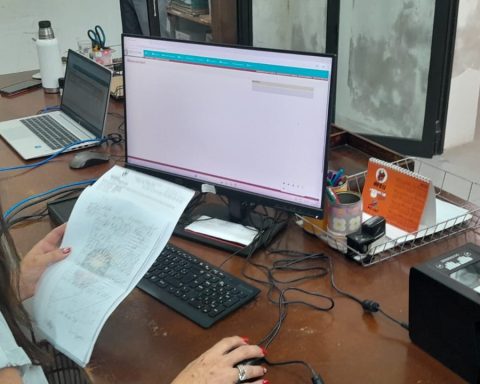A survey revealed that the online shopping market improved last year although he couldn’t reach pre-pandemic levels. It also showed that e-commerce was taking hold on local sites.
The report, carried out by the Cifra consultancy at the request of the Chamber of the Digital Economy of Uruguay (CEDU)sought to delve into digital consumption trends during 2022.
One of the conclusions of the survey was that the digital consumers they continue to make much more local purchases than abroad. Almost four out of 10 (38%) of those consulted indicated that they made at least one purchase per month in the last year at sites in Uruguay, the highest percentage recorded in the Cifra series.
He added that only 5% bought with that frequency abroad. That was an increase from the pandemic years, but it was below 2019.
From the CEDU they told The Observer From the survey carried out in 2022 to digital consumers (internet users) it can be seen that 25% of Uruguayans bought at some time in 2022 from foreign sites, when in 2019 this percentage was 52%.
They added that this implies a drop of around 51% between the number of Uruguayan Internet users who bought abroad in 2019 to 2022, beyond the fact that the levels of satisfaction in online purchases abroad do not fall (8.7 out of 10 in 2019 that reiterated in 2022, oscillating slightly in that period between those figures).
PIXABAY
The survey reported that the purchases made by people in Uruguayan sites were clothing, footwear and accessories with 46%, delivery with 36%, household items with 34% and electronic items with 28%. In the case of purchases abroad, the main ones were clothing, footwear and accessories with 13% and electronic items with 8%.
Regarding the evolution of the activity in the last four years, the survey verified that when analyzing the “last purchase made” in Uruguay in the medium term (since 2019) it is observed that Food and beverages (63% growth), household appliances (52%), household items (50%), perfumery and pharmacy (46%), and clothing and footwear (21%) increased significantly. The purchase of transportation (with a drop of 58%), tickets and hotels in Uruguay (315), tickets to shows (27%) and food delivery (14%) also recovered, although with less participation than in 2022. .
Regarding purchases abroad, he pointed out that they have been reduced markedly since 2019, although last year they showed a slight recovery in relation to the peak of the pandemic. A better performance was verified, in particular, in the minority of consumers who purchased electronic items (it had a negative balance of 7% in pre-pandemic and became positive in 2022 with 5%). The category clothing, footwear and accessories (13%) was the most preferred in purchases abroad, followed by electronics (8%)
From the CEDU they pointed out that in 2022 the purchases of Uruguayan Internet users on Uruguayan sites were 81% and those made abroad were located at 25% (since some Internet users combine local and foreign purchases). They added that if the adult population is also strictly divided, from the telephone survey -not only Internet users- it can be deduced that 14% of Uruguayans bought abroad, and 84% in sites in Uruguay, while 2% he does not remember.
Buying abroad (almost always as a complement to those made in Uruguay) is more common among men, Montevideans, and high-level people.

PEXELS
He added that half of those who buy online buy products and services and almost another third only products. In turn, there are very few consumers who only buy services in Uruguay (a category that includes delivery, transport, hotels and shows).
Advantages and barriers
Respondents indicated that the perceived advantages of buying online are several and more are identified than the barriers to doing so. The main reasons for carrying out transactions through the web instead of in a store in person are the convenience of searching and buying at the time you want, the ease of looking at products, the lowest prices, the speed of the purchase and the variety of the offer.
The document that most consumers compare prices between Uruguayan sites before buying and a minority do so between sites and physical stores. Also that there are still few (and less than half of what they were in 2019) that compare prices between Uruguayan and foreign sites.
The main barriers identified are the lack of physical contact with the product or the difficulty of finding what they are looking for. Others that previously had greater weight were reduced, such as the lack of a means of payment or mistrust in internet transactions (payment, shipping of the displayed product or return).
One of Cifra’s conclusions was that competition for the purchase of products is not abroad, but between Uruguayan sites and businesses. In this sense, the competition between stores and marketplaces is somewhat similar to that between businesses and shopping malls. He added that the businesses are slowly managing to reach consumers directly and one of the tools to achieve this was e-mail.















